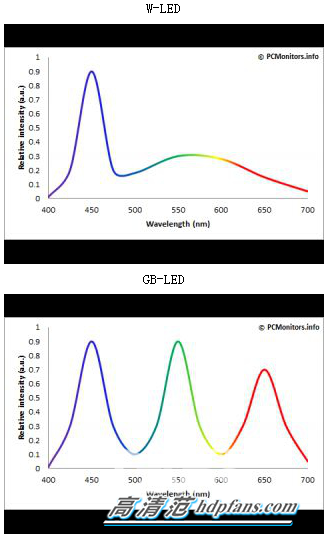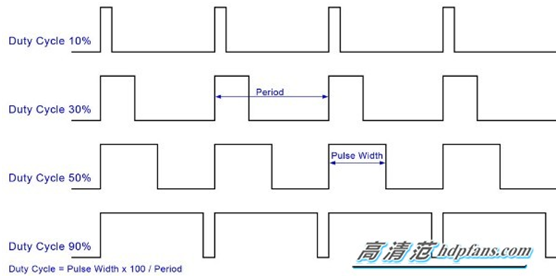TV and smart projector in the end who is more eye injury? Shocking results
2017-04-25Intelligent projector and TV, this completely unrelated products, with nearly two years of projector intelligent technology, began to really go to the TV "opposite At the same time, the "no screen TV", "private cinema" and "home theater" such advertising hot words gradually into the public view. From a technical point of view, equipped with an intelligent system has gradually exposed the micro projector. However, both the best and the worst, there is still time to verify, here mainly to protect the perspective of vision between the two differences.
I believe that anyone who has heard such advice "watch less TV, because TV hurt the eyes", the fact is indeed the case, the TV is through what is hurting our eyes? Similarly, with the eyes to see, what is the difference between the projector and the TV? How can we avoid this injury to protect the eyes? Let's look at it!
1.Direct light and reflected light
Now the TV most is "LED backlight LCD TV", which is based on RGB-LED light emitting directly stimulate the human eye, so here we will set known as direct light; and micro projector is through the RGB-LED light source, and then projected onto the screen or wall by sight, so the projection is reflected light. That is to say, we watch TV is directly staring at the light source, look at the projection is to look at the projection of the reflection surface, just like reading, look at the reflection of the sun rather than directly to the sun. From this point of view, the TV damage to the human eye is obviously higher than the projector.
Some LCD screen in order to increase the resolution, in addition to the screen behind the light pipe to increase the brightness, but also widely used specially "technology" makes the display surface polished looks like a piece of glass, is textured, but also improves the screen color contrast and saturation. But it also reflects the light like glass. Especially when the light shines on the screen, it will increase the light reflection. Consumers who use this screen, can easily be "stabbed" by the light, and the symptoms of eye fatigue, and slowly lead to decreased vision and headache health problems. The projection of the wall will not appear like a mirror reflector.
2.blue light hazards
When it comes to light, here relates to the "eye" of the first killer - blue, blue light is called High Energy Visible Lights, we know that light is an electromagnetic radiation, enhanced with energy, the rising frequency of radiation on the human body. The blue light is the highest visible light energy, higher than in our daily life, we can not avoid the UV frequency, greater damage. So blue may lead to "blind" and not stunning people heard. This is also one of the biggest reasons for the sharp rise in the prevalence of myopia in today's digital age.
Whether it is television or projector is the use of RGB-LED light source, is red yellow and blue LED light source, and the 3 kinds of color LED, with "blue LED" is the most important, the blue light is weakened makes color distortion, overall hue of red and yellow. Take a look at the two main light-emitting module LED display W-LED (commonly used) and the spectral composition of GB-LED. Following figure

It can be seen, whether it is W-LED or GB-LED, the proportion of short wavelength blue light components are high, long time use of the human eye will be relatively large stimulus. But the same light source, through the reflection imaging of the micro projector is obviously less than the direct TV Blu ray harm. Projection has a parameter called brightness, brightness of the right words will not have any impact, too dark too bright, then the same vision is not good, family entertainment recommended the actual brightness of 500-1000 ANSI lumens
3.screen flicker
In the days when we were still using the big screen TV, we could feel the flicker of the screen. This is because the head of the TV CRT display imaging principle is to rely on electronic gun bombardment of the phosphor on the image tube, the frequency is usually around 20-30Hz, so we can obviously feel the flicker. And now the use of liquid crystal display has a refresh rate, the most common is 60 Hz. But this refresh rate has nothing to do with flicker. No matter how much liquid crystal refresh rate, will not make people feel the flicker. The real cause of liquid crystal display flicker is the LED backlight dimming mode. LED dimming way is to adjust the intensity of light emitted by the LED, can be broadly divided into PWM dimming and non PWM dimming two.
PWM dimming brightness is in a very short period of time for LED lamp to adjust the screen brightness repeatedly, this bright and dark process is visible in the eyes of a frequency flashing PWM impact, the higher the frequency, the human impact on the perception of the weak; this is why. Some people use the PWM dimming the display, will feel eye fatigue, mainly because of the impact of the visual system frequency is close to the upper limit frequency flicker perception. Because of the existence of individual differences, some people are not aware of this low-frequency flicker, while others are very sensitive. The reason why the PWM dimming is widely used in the market is that this method is easy to realize and can reduce the production cost. (see figure below)

Since the PWM dimming frequency is higher than CRT 60 HZ, it is not easy to be perceived. Due to the working principle of PWM dimming, will cause the display in the low brightness when the degree of flicker is more obvious. All eyes are sensitive, when the LCD display brightness down, it can also feel the flicker. Rather than PWM dimming display will not have this problem. However, due to the cost of the entire television industry, the vast majority of manufacturers will choose PWM dimming, which is currently the majority of TV industry will not be dimming mode included in the list of parameters.
The projector light is reflected through the principle of reflection, the projector light emitting elements to gather all the beams, to reflect the mirror after multiple reflections, the formation of a uniform and stable rectangular image. The stability of the projection screen does not flicker, and fundamentally eliminate the damage caused by the flashing of the PWM dimming screen. Not only that, the projection diffuse reflection imaging can also make the image of the visual angle is greater, the TV does not appear to be left or right to see the reflection of the situation.
Summary: the results of a comprehensive comparison between the two superior judgment, smart projector is indeed more eye care than smart tv.
Brilens is one of the few China have their own core technology of the projector manufacturers. Brilens TL2K is the best choice for your home projector. More clear and healthy! Welcome contact us to know more projector details.

